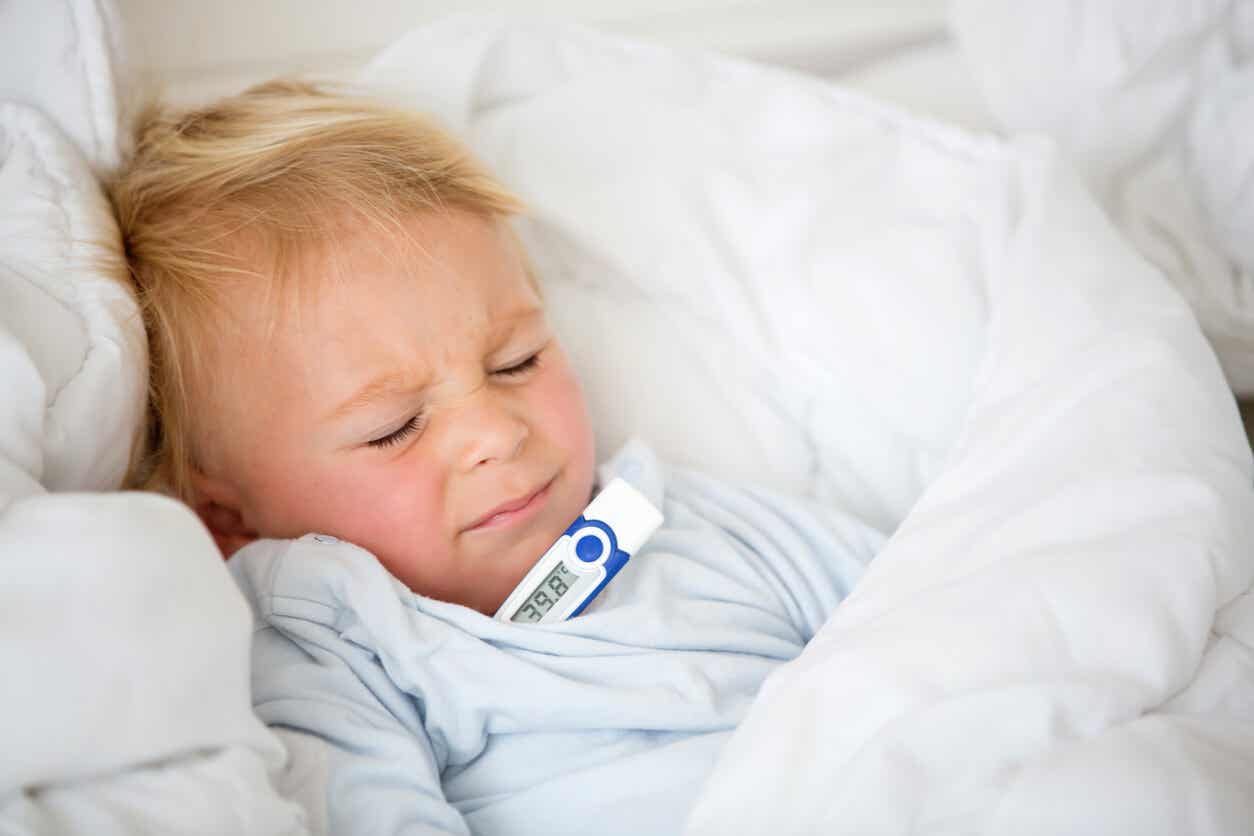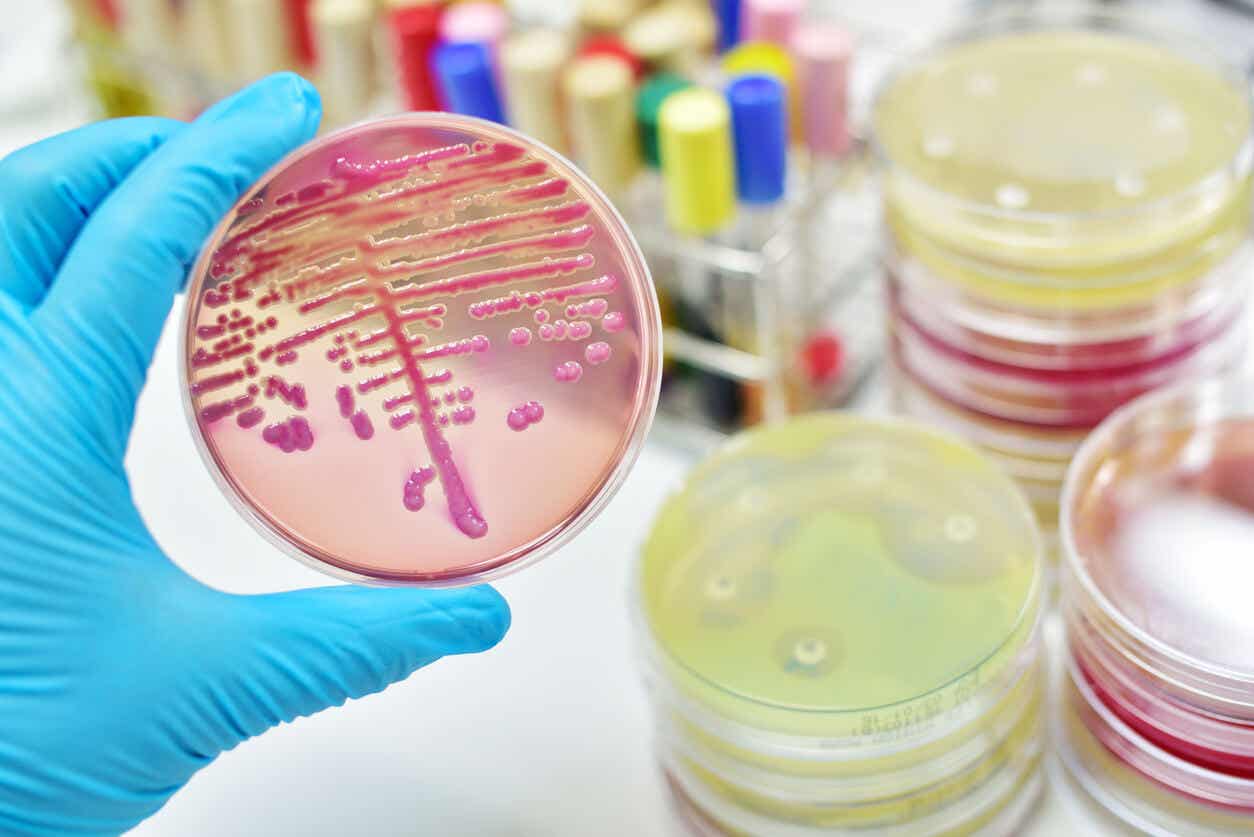How to Detect Meningitis in Time

Meningitis is one of the most feared diseases in childhood, especially because of its rapid clinical evolution and the possibility of leaving sequelae. For this reason, it’s essential that you learn to detect meningitis by recognizing the warning signs in time and seek medical attention as soon as possible.
In this article, we’ll tell you the basic aspects of the disease and give you some recommendations so that you know how to act if your child shows these symptoms. Keep reading!
Learn to detect meningitis: The signs and symptoms
As with many diseases, the clinical manifestations of meningitis vary according to the age of the child.
It’s one thing for a 7-year-old child to tell you they have a bad headache. But it’s a whole different story when it comes to an extremely irritable baby who can’t explain what’s happening to them or why they’re crying. For this reason, early detection of meningitis can be a huge challenge, even for pediatricians.
The child’s age, then, is a determining factor when suspecting this disease.
To summarize, we’ll describe the typical symptoms of meningitis in the different pediatric stages:
- Under 12 years of age: Irritability and frequent crying, bulging of the fontanelle (the “soft spot” on the infants’ head), seizures, fever, skin changes, and vomiting. These symptoms usually don’t improve with the usual medical treatments.
- Older than 12 years: Neck stiffness and severe headache are the most characteristic symptoms of the disease. They may be accompanied by fever, vomiting, or behavioral changes.

What are the most common causes of meningitis in children?
Meningitis is an infection of the nervous system, located at the level of special tissues called meninges. These are layers of thin, resistant tissue that cover the brain and other organs to protect them from external aggressions.
The germs that cause meningitis are mainly bacteria and viruses. According to a publication of the Spanish Association of Pediatrics, the causative microorganisms vary in frequency according to the age and vaccination status of the child.
The following is a description of the bacteria that most frequently cause this infection in Spain:
- Newborns: Streptococcus agalactiae, Escherichia coli, and Listeria monocytogenes.
- Infants between 1 and 3 months: Streptococcus agalactiae, Streptococcus pneumonia, and Neisseria meningitidis.
- Older than 3 months: N. meningitidis and Streptococcus pneumoniae.
Most of the time, these bacteria enter the child’s body through the oropharynx (throat). From there, they spread throughout the body until they reach the central nervous system.
Find out more: 5 Common Childhood Illnesses Caused by Bacteria
How do doctors detect meningitis in children?
Once the emergency department admits a child with possible meningitis, pediatricians will order tests to confirm the infection. Ideally, this will take place before treatment begins, but the optimal time will depend on the child’s general condition.
Some of the complementary studies that specialists conduct when they suspect meningitis are the following:
Lumbar puncture
This consists of taking a sample of cerebrospinal fluid, which is the fluid that circulates under the meninges. The procedure to collect it is known as lumbar puncture. Once doctors obtain the sample, they send it to the laboratory to confirm the diagnosis and analyze the causes.
Complete blood count
This is a very common blood test that involves assessing the white blood cell count as an indirect parameter of infection.
Blood chemistry
This study is used to quantify markers of infection, such as procalcitonin, C-reactive protein (CRP), and erythrocyte sedimentation rate (ESR).
Blood culture
Doctors will take a blood sample to culture in a special medium to evaluate the growth of microorganisms. The main drawback of this test is that the results may take several days, so treatment begins even before this information is available.

What to do in case you suspect meningitis in children?
If your child presents any of the above symptoms suddenly, it’s important to rule out meningitis. Meningitis can occur even if the child has been completely healthy all their life. Although it’s sometimes possible to detect the cause, in many cases, it’s not possible to identify the triggering factor of the disease.
If you suspect meningitis, go to a pediatric emergency department as soon as possible. Also, if your child has any medical history or recently performed tests, take all the documents with you.
If this suspicion is confirmed, it’s very likely that the doctors will decide to hospitalize your child for a few days to provide appropriate treatment and ensure close clinical monitoring.
Meningitis is one of the most feared diseases in childhood, especially because of its rapid clinical evolution and the possibility of leaving sequelae. For this reason, it’s essential that you learn to detect meningitis by recognizing the warning signs in time and seek medical attention as soon as possible.
In this article, we’ll tell you the basic aspects of the disease and give you some recommendations so that you know how to act if your child shows these symptoms. Keep reading!
Learn to detect meningitis: The signs and symptoms
As with many diseases, the clinical manifestations of meningitis vary according to the age of the child.
It’s one thing for a 7-year-old child to tell you they have a bad headache. But it’s a whole different story when it comes to an extremely irritable baby who can’t explain what’s happening to them or why they’re crying. For this reason, early detection of meningitis can be a huge challenge, even for pediatricians.
The child’s age, then, is a determining factor when suspecting this disease.
To summarize, we’ll describe the typical symptoms of meningitis in the different pediatric stages:
- Under 12 years of age: Irritability and frequent crying, bulging of the fontanelle (the “soft spot” on the infants’ head), seizures, fever, skin changes, and vomiting. These symptoms usually don’t improve with the usual medical treatments.
- Older than 12 years: Neck stiffness and severe headache are the most characteristic symptoms of the disease. They may be accompanied by fever, vomiting, or behavioral changes.

What are the most common causes of meningitis in children?
Meningitis is an infection of the nervous system, located at the level of special tissues called meninges. These are layers of thin, resistant tissue that cover the brain and other organs to protect them from external aggressions.
The germs that cause meningitis are mainly bacteria and viruses. According to a publication of the Spanish Association of Pediatrics, the causative microorganisms vary in frequency according to the age and vaccination status of the child.
The following is a description of the bacteria that most frequently cause this infection in Spain:
- Newborns: Streptococcus agalactiae, Escherichia coli, and Listeria monocytogenes.
- Infants between 1 and 3 months: Streptococcus agalactiae, Streptococcus pneumonia, and Neisseria meningitidis.
- Older than 3 months: N. meningitidis and Streptococcus pneumoniae.
Most of the time, these bacteria enter the child’s body through the oropharynx (throat). From there, they spread throughout the body until they reach the central nervous system.
Find out more: 5 Common Childhood Illnesses Caused by Bacteria
How do doctors detect meningitis in children?
Once the emergency department admits a child with possible meningitis, pediatricians will order tests to confirm the infection. Ideally, this will take place before treatment begins, but the optimal time will depend on the child’s general condition.
Some of the complementary studies that specialists conduct when they suspect meningitis are the following:
Lumbar puncture
This consists of taking a sample of cerebrospinal fluid, which is the fluid that circulates under the meninges. The procedure to collect it is known as lumbar puncture. Once doctors obtain the sample, they send it to the laboratory to confirm the diagnosis and analyze the causes.
Complete blood count
This is a very common blood test that involves assessing the white blood cell count as an indirect parameter of infection.
Blood chemistry
This study is used to quantify markers of infection, such as procalcitonin, C-reactive protein (CRP), and erythrocyte sedimentation rate (ESR).
Blood culture
Doctors will take a blood sample to culture in a special medium to evaluate the growth of microorganisms. The main drawback of this test is that the results may take several days, so treatment begins even before this information is available.

What to do in case you suspect meningitis in children?
If your child presents any of the above symptoms suddenly, it’s important to rule out meningitis. Meningitis can occur even if the child has been completely healthy all their life. Although it’s sometimes possible to detect the cause, in many cases, it’s not possible to identify the triggering factor of the disease.
If you suspect meningitis, go to a pediatric emergency department as soon as possible. Also, if your child has any medical history or recently performed tests, take all the documents with you.
If this suspicion is confirmed, it’s very likely that the doctors will decide to hospitalize your child for a few days to provide appropriate treatment and ensure close clinical monitoring.
All cited sources were thoroughly reviewed by our team to ensure their quality, reliability, currency, and validity. The bibliography of this article was considered reliable and of academic or scientific accuracy.
- Artigao F, et al. Meningitis bacteriana. Asociación Española de Pediatría. Protocolos diagnósticos y terapéuticos. Disponible en: https://www.aeped.es/sites/default/files/documentos/meningitis.pdf.
- Weinberg G. Meningitis en niños. Manual MSD. Disponible en: https://www.msdmanuals.com/es-ve/hogar/salud-infantil/infecciones-bacterianas-en-lactantes-y-ni%C3%B1os/meningitis-en-ni%C3%B1os#:~:text=La%20meningitis%20bacteriana%20en%20lactantes,el%20torrente%20sangu%C3%ADneo%20(septicemia).
This text is provided for informational purposes only and does not replace consultation with a professional. If in doubt, consult your specialist.








